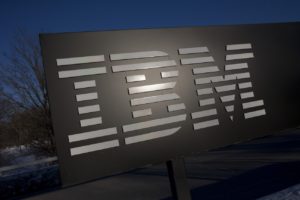IBM debuts Z16 hybrid-cloud mainframe with real-time AI capabilities
Big Blue: 45 of world’s largest 50 banks use Z series mainframe
IBM released its new Z16 mainframe today, one that offers a real-time, artificial intelligence (AI) accelerator into its IBM Telum processor.
The mainframe is lightning fast at handling massive amounts of information and offers real-time AI, reducing the latency of processing millions of transactions down from 80 milliseconds to handling 300 billion operations per day with 1 millisecond of latency, IBM said Friday.

The X series mainframe is currently used at 45 of the world’s largest 50 banks, said Brigid McDermott, global general manager, financial services industry at IBM.
“We’re assuming that most of them will move to Z16, especially with the advantages like speed … as well as the quantum-safe computing that we have as well,” McDermott told Bank Automation News.
McDermott was referring to the fact the system is built to National Institute of Standards and Technology (NIST) standards to be “quantum safe,” meaning it is measured by its ability to handle encryption. Quantum computers are known for their ability to break encryption.
Built-in AI inference accelerator and banks
When it comes to AI, there are two key concepts relevant to understanding Z16’s capabilities, noted Elpida Tzortzatos, IBM fellow and AI strategy lead for the Z series. One is training time, which refers to the process of using machine learning algorithms to build a model trained on existing historical data, such as transaction data, Tzortzatos said during a Friday press conference. The other is inference, which refers to the process of executing the trained model on live data — such as real-time transactions — to generate a result of inference, such as the score used in fraud detection.
Tzortzatos provided an example involving an unnamed large U.S. bank that had a credit card authorization application and wanted to use machine learning to improve the accuracy of the app’s fraud detection.
“What they quickly found out when they tried to do this off-platform, they run into challenges around timeouts, inconsistent response times, even when they could get a prediction back to the application, it took upwards of 80 milliseconds in terms of latency,” Tzortzatos said. “In addition to that, they could not scale their AI to really score and examine every transaction; they had to selectively choose a subset of their transactions to score.”
By bringing that AI model onto the Z16 mainframe, the bank could “immediately see consistent response time or single millisecond latency,” as well as scale their transactions. The bank went from scoring 1,200 transactions per second to 15,000 to 20,000 transactions per second by switching to IBM’s new platform.
“That meant they could analyze every single transaction,” Tzortzatos added.
Automation support
The IBM Z16 also supports DevOps automation in a hybrid cloud environment out of the box, John Duigenan, vice president, IBM distinguished engineer and global CTO for financial services, told BAN. It reduces the manual steps to setting up the hybrid cloud infrastructure and ecosystem.
“We’re thinking about the automation of the entire development and operational processes from beginning to end,” Duigenan said. “One of the things that we’ve placed a huge emphasis on with IBM Z 16 is making sure that the DevOps tool chains and the development environments that developers and operations people use look just like they would in any other environment.”
The new mainframe also supports a decoupled development environment with support of containerization, just as the cloud does, and it uses AI software to automate the monitoring of operations, Duigenan and McDermott explained. Over time, the AI improves as it watches a specific software deployment and learns its normal characteristics, which allows it to detect any anomalies.
“That’s part of the reason why clients like Discover and HSBC are agreeing with IBM hybrid cloud and AI strategy and adopting our ways of working, adopting our product capabilities,” Duigenan added.
Such capabilities for real-time AI, potentially quantum-proof encryption and real-time fraud detection capabilities will help support real-time payments, McDermott added.
But IBM says it can’t even guess at all the use cases for its new mainframe, with Ross Mauri, general manager for IBM Z, calling it a “game-changer.”
“We don’t even know all the possibilities yet that are going to come from this,” Mauri said. “I mean, to think that you’re going to have an on-chip AI accelerator that allows a client to do 30 billion deep learning inferences per day at one millisecond latency — latency that’s really never been seen and a throughput and performance statement that’s never been seen.”












